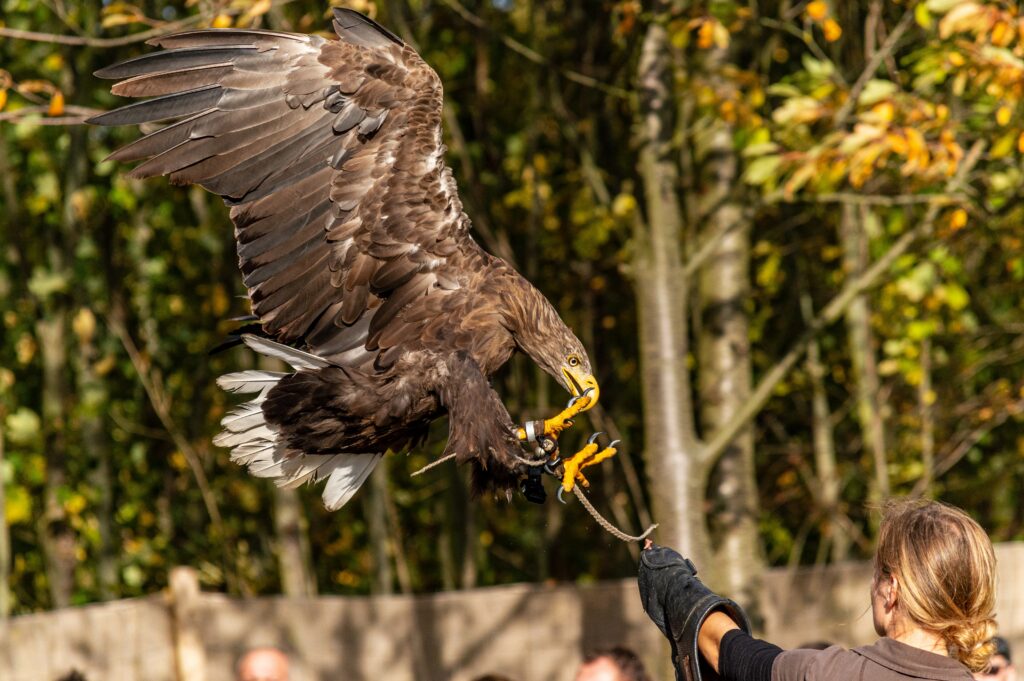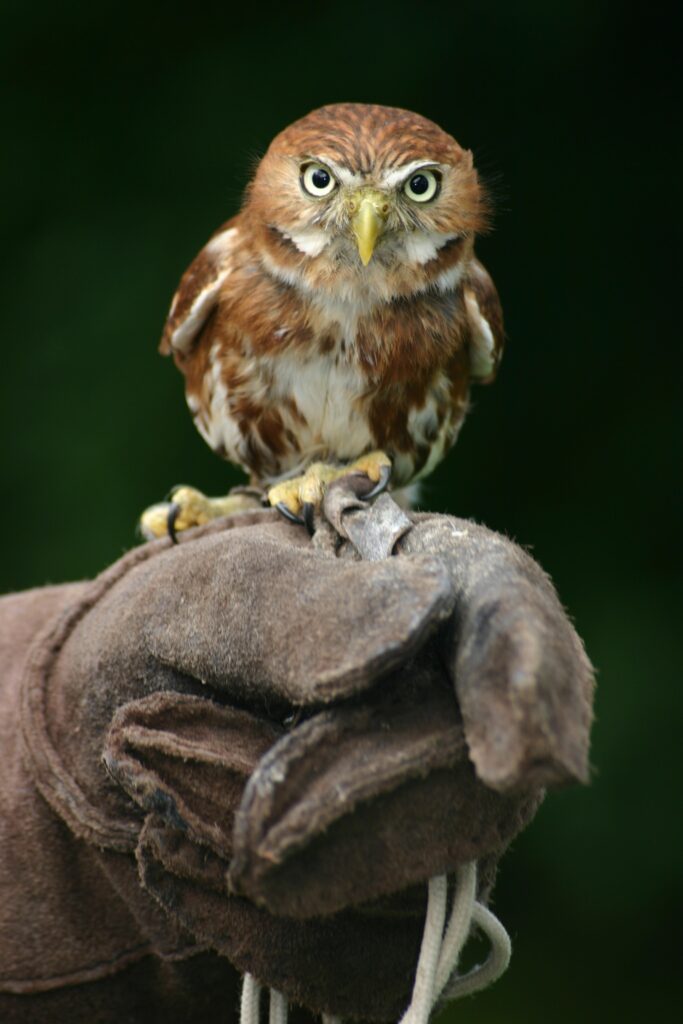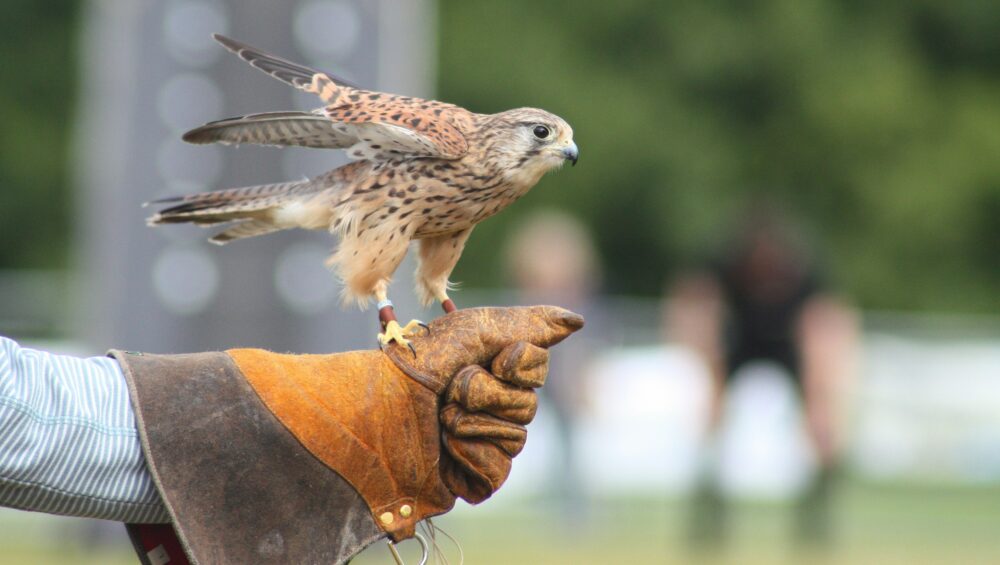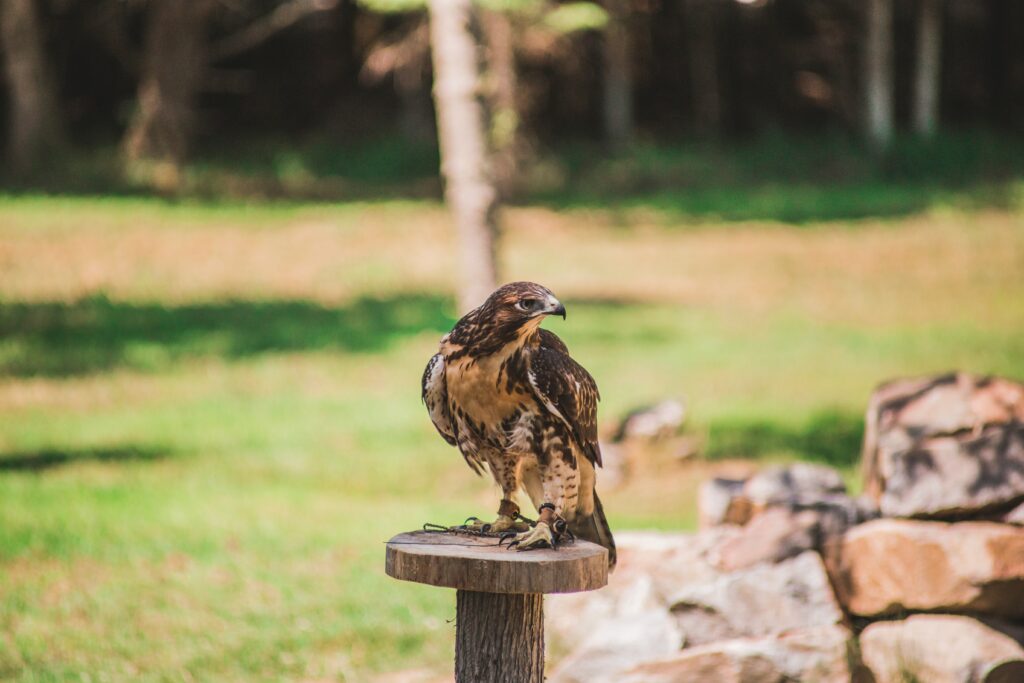Falconry is a thrilling, age-old sport involving training birds of prey for hunting. It has been practiced for thousands of years and is known as the sport of kings from its popularity among nobles in Medieval Europe. It is a rare sport, mainly due to the time and financial investment, though it is practiced all over the world.
While falcons are obviously first thought of, there are many species of birds used in falconry, including hawks, owls, and eagles. In fact, the sport is also called ‘hawking’ as it is common to call your bird a ‘hawk’ regardless of species. Birds of prey are chosen by their falconers for a number of features, including size, intelligence, temperament, and train-ability. We will go over some of the most common birds used in falconry, so you can know what to expect from a beginner falconry experience.

What Birds Are Used In Falconry
Falcons
As the name suggests, falcons are the most popular raptors in the sport. Falcons are longwing birds, and their extended wingspans allow them to soar over open terrain and hunt other birds in mid-air. The most common is the Peregrine Falcon, as they are comparatively easy to train and are the fastest animal in the world, with a diving speed of up to 240 mph.
Gyrfalcons are the largest falcons, reaching up to two feet long. They can have wingspans up to four feet and are often hunt geese, ducks, and pheasants. Gyrfalcons hunt by following other birds until they tire out, whereas Prairie Falcons hunt with a waiting-on style. This means they circle above the prairie until the falconer (or their hunting dog) flushes prey from its hiding spot.
In addition to one Peregrine Falcon, Broadmoor also houses a Saker Falcon and a Lanner Falcon. The Saker Falcon is the second largest falcon species in the world and is hypothesized to be the first ever used for the sport of falconry. It is versatile and can be used in direct pursuit flights or with a waiting-on style. Lanner Falcons tend to be less aggressive than other raptors of their medium-large size. As such, they are great for beginner falconers and demonstrations, like the Broadmoor’s beginner falconry experience.
Merlins are one of the smallest falcons, and, similar to gyrfalcons, can follow prey for miles on end. Their falconers use radio transmitters to keep tabs on the bird’s location. The American Kestrel is a popular falconry choice because they are easy to purchase and easy to train. As the smallest of all falcons, Kestrels weigh the same as 34 pennies! They hunt small birds and specialize in short-distance flights.
Hawks
Shortwings, such as hawks, train to hunt in forested areas. They usually wait in tree branches or on their falconer’s glove for ground prey to reveal themselves. Goshawks have a long history in falconry, having been popular in ancient times and seeing a revival now. They can be temperamental if not trained properly. But when trained well, goshawks are highly productive, agile, and determined.
The Harris’s Hawk is another popular falconry bird, however only recently so. Harris’s Hawks like to hunt in an organized group, called a “cast,” and this gives them an edge over lone hunters. They are very successful at hunting rabbits, squirrels, rodents, and small birds. Their easy disposition and ability to hunt in a team have made them a new favorite in the falconry world.
Other Falconry Birds
While owls are not popular falconry birds, they do have a couple unique features that make them attractive to falconers. The first is their unique ability to fly completely silently. The second is that while most other falconry birds are diurnal (fly during the day), owls are nocturnal or crepuscular. You can tell from their bright orange eyes that Eurasian Eagle Owls are crepuscular, meaning active during dawn and dusk.
Golden Eagles are popular in Central Asia and one of the birds of choice in traditional Mongolian Falconry. They are exceptionally strong and able to carry a fox in flight. As such, they hunt deer, bobcats, and even wolves. If you are looking for a place near you to possibly spot one in the wild, Rocky Mountain National Park is home to 25 species of birds of prey, including Peregrine Falcons and Golden Eagles.
Common Buzzards are broadwing birds that are popular for beginner falconers because of their size and temperament. However, they require a lot of regular flying time, and therefore tend to be substituted once a falconer feels comfortable moving to something more complex.

Broadmoor Falconry Experience
Now that you know a bit about the amazing creatures used in falconry, you likely want to see some in person. If you are interested in getting first-hand experience, the best place for falconry in Colorado Springs is at the Broadmoor. Here you can see falcons, Harris’s Hawks, a barn owl, and more.
The Broadmoor offers two lessons, beginner and intermediate, for participants to see falconry up close and personal. The beginner lesson is the perfect place to learn more about falconry hunting and the history of the sport. Instructors explain how they train and hunt with the hawks and provide a jaw-dropping demonstration. If you have ever wanted a bird to land on your (gloved) arm, here is your chance. At only an hour and a half, this beginner falconry experience is a day trip for visitors to Colorado Springs. Plus, the lesson is available for anyone over the age of five, making it a perfect educational experience for your bird-obsessed little ones.
The intermediate lesson is only available to those who have completed the beginner experience, and it is well worth the effort. On this tour, you will take a Harris’s Hawk on a scenic outdoor trail in Colorado Springs and watch it work. The instructor will guide you through holding the hawk on your arm and casting it out to a tree. You can watch it soar and hunt and eventually return to your arm. This unique opportunity is a great way to learn more about the birds used in falconry and get a hands-on glimpse into this timeless sport.


